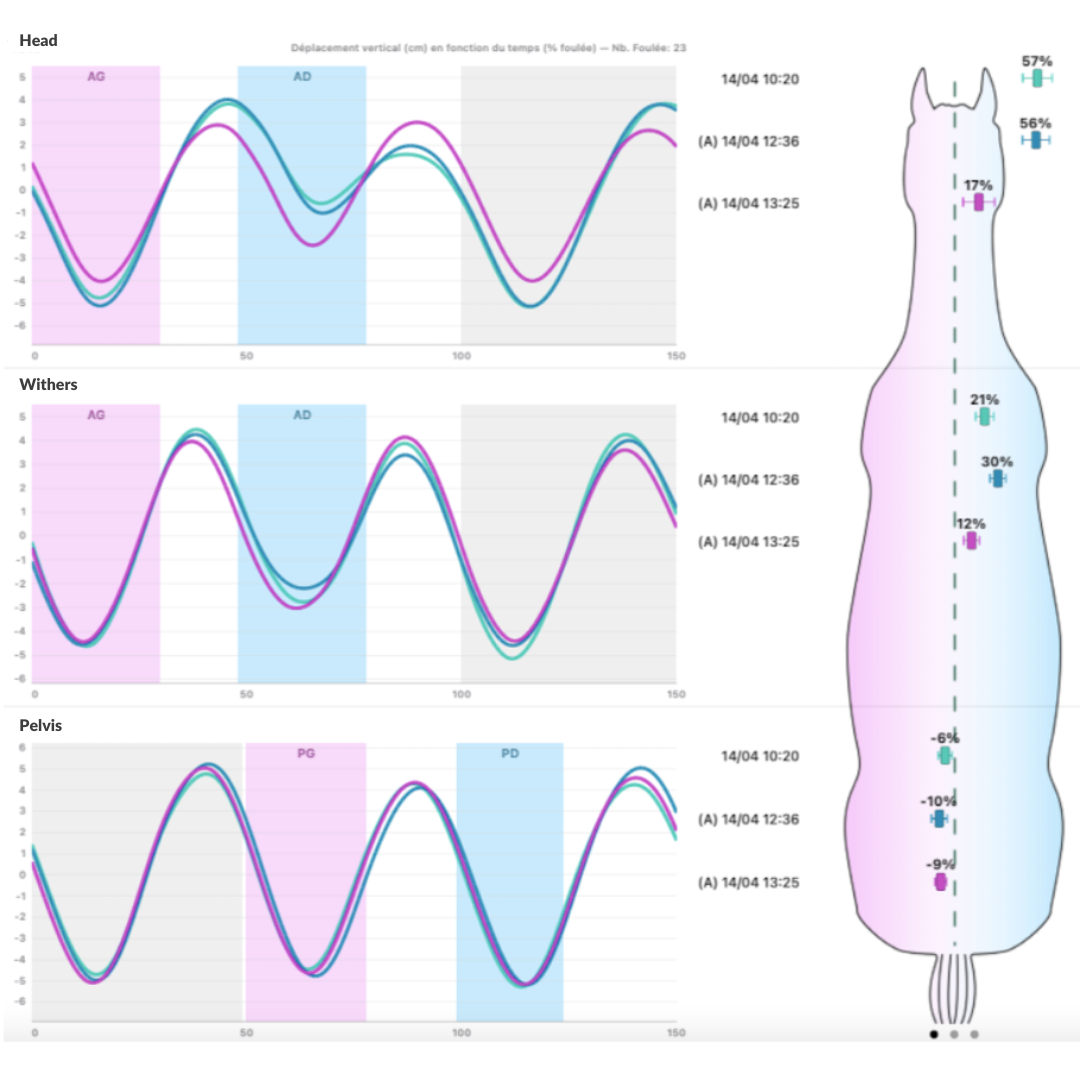Diagnostic anesthesia is a technique for reducing or eliminating pain. This technique is used to sedate a horse by “blocking” the nerves in a specific area.
It is typically used to locate a lameness, clinically evaluate radiographic or ultrasound findings, or distinguish between a lameness and a disease.
But how can diagnostic anesthesia be interpreted? Is it possible to quantify its impact and influence on the horse’s locomotion?
Diagnostic anesthesia is a valuable investigative technique for equine locomotor examinations. Piccot-Crézollet, Casamatta, and Lepage’s 2005 study reminds us that improvement in lameness after truncal or synovial anesthesia can help guide the diagnosis by localizing the pain. Suspicious radiographic lesions can be assigned clinical significance using this method. Pain concealment with local anesthetics can also reveal or amplify previously undetected or inconspicuous lameness of the contralateral limb.
To accurately measure the effects of anesthesia on locomotion during a diagnostic examination, an objective measurement of lameness is necessary. The new tools for quantification of locomotion (integrating a quantification tool with the veterinary activity) are nowadays a precious support for the evaluation of diagnostic anesthesia. In fact, a study was conducted almost 10 years ago to see if an inertial sensor system could help distinguish a positive or negative response to diagnostic foot anesthesia – and then objectively evaluate the effect of a positive response on the horse’s locomotion.
This study’s findings show that such tools can identify a positive response to diagnostic foot anesthesia. In horses with a positive response, the symmetry of movements attributed to the diseased limb, contralateral forelimb, and contralateral hindlimb improved significantly, as did head movement.
Nowadays, anaesthesia is a common procedure, frequently used by veterinarians. However, this method still carries risks, more or less important, for the horse. Life-threatening complications such as severe allergy, cardiac arrest, asphyxia or neurological damage are still extremely rare.
Arion had a clinical examination following an significant asymmetry of the right forelimb. His veterinarian equipped him with EQUISYM, a locomotion quantification tool, to accurately evaluate the efficiency of the anesthesia. Here are the data collected during the locomotion examination:

Data recorded during the spontaneous straight-line locomotion examination on hard ground are represented by the green curves and indexes. The blue data are collected during the RF Proximal interphalangeal joint anesthesia, and the purple data are collected during the Abaxial sesamoid nerve block anesthesia of the same limb.
EQUISYM data clearly indicate that RF Proximal interphalangeal joint anesthesia is negative, while Abaxial sesamoid nerve block anesthesia is positive. More precisely:
- Abaxial sesamoid nerve block anesthesia improved Arion’s withers amplitude of elevation by 9%.
- The effect of the anesthesia was even more significant for the head index, with a 40% improvement in the amplitude of elevation.
- The anesthesia slightly degrades the locomotion of the pelvis, -3%, which can be explained by a compensation of the left hindlimb.
CONCLUSION
Diagnostic anaesthesia is often used during locomotor examinations as it enables to identify the horse’s painful area. The tools of locomotion quantification have become a real support when using this method, since they provide an objective evaluation of the effects. In such a case of use, the objective data are a real complement to the expertise of the veterinarian.
SOURCES :
An inertial sensor-based system can objectively assess diagnosticanaesthesia of the equine foot – DOI: 10.1111/evj.1215826
Key-words : diagnostic anesthesia, veterinary diagnosis, veterinary practice, locomotor asymmetry, lameness, locomotion quantification tool, EnvA, CIRALE



